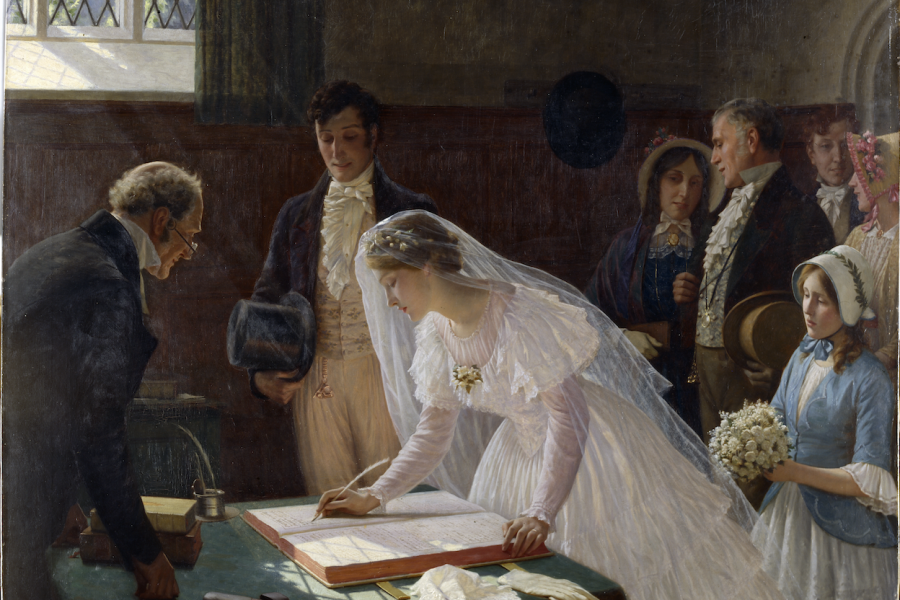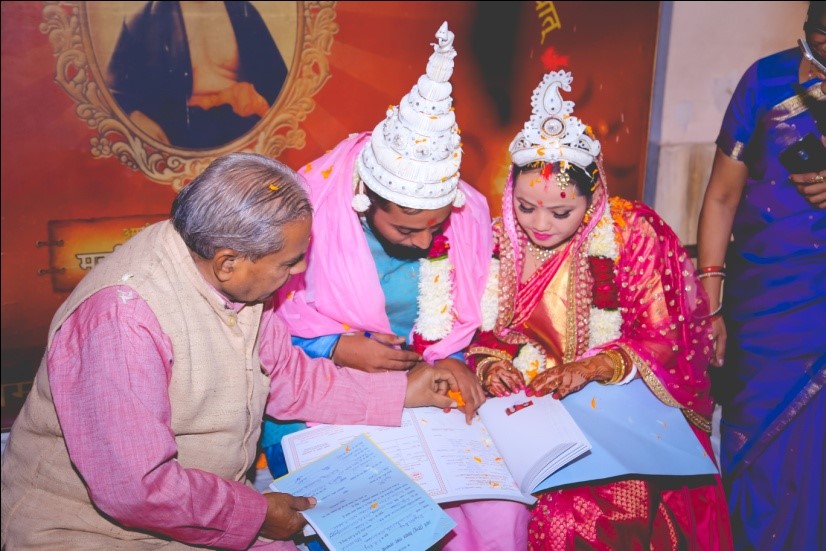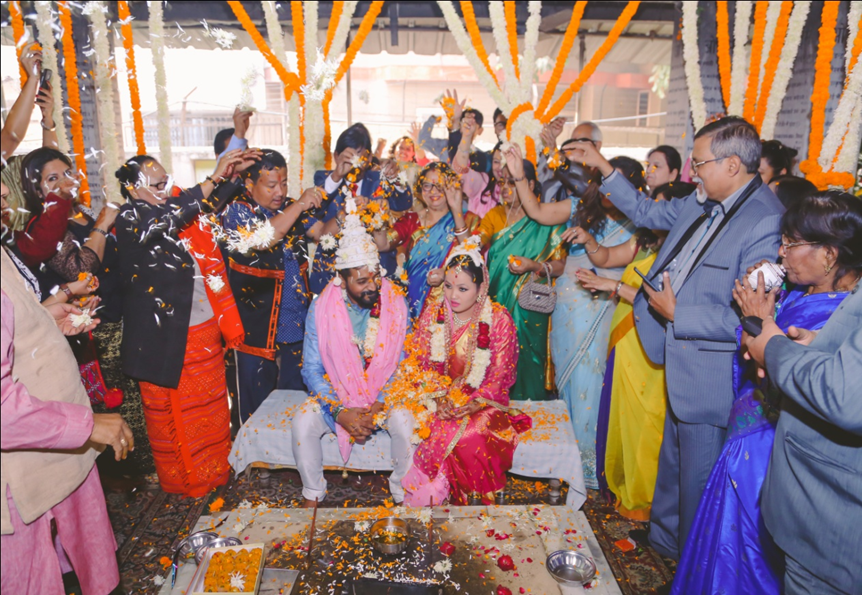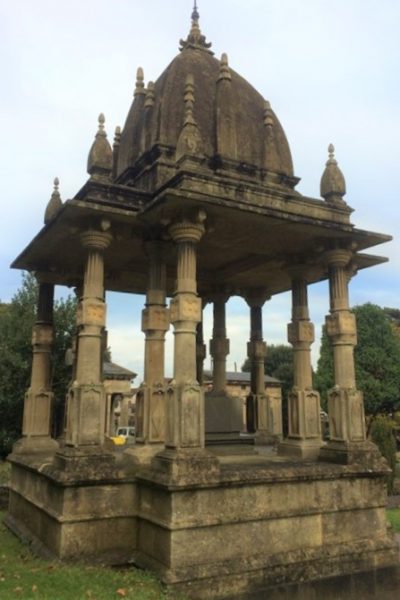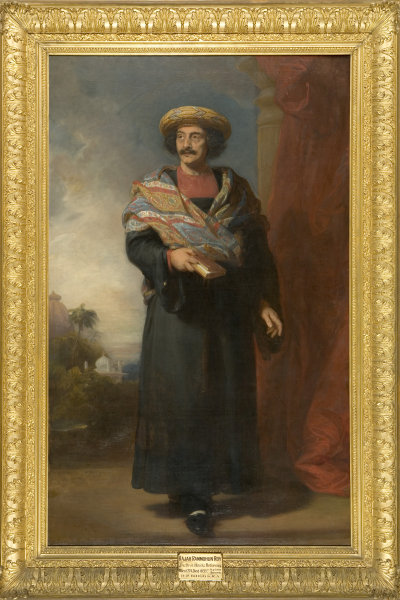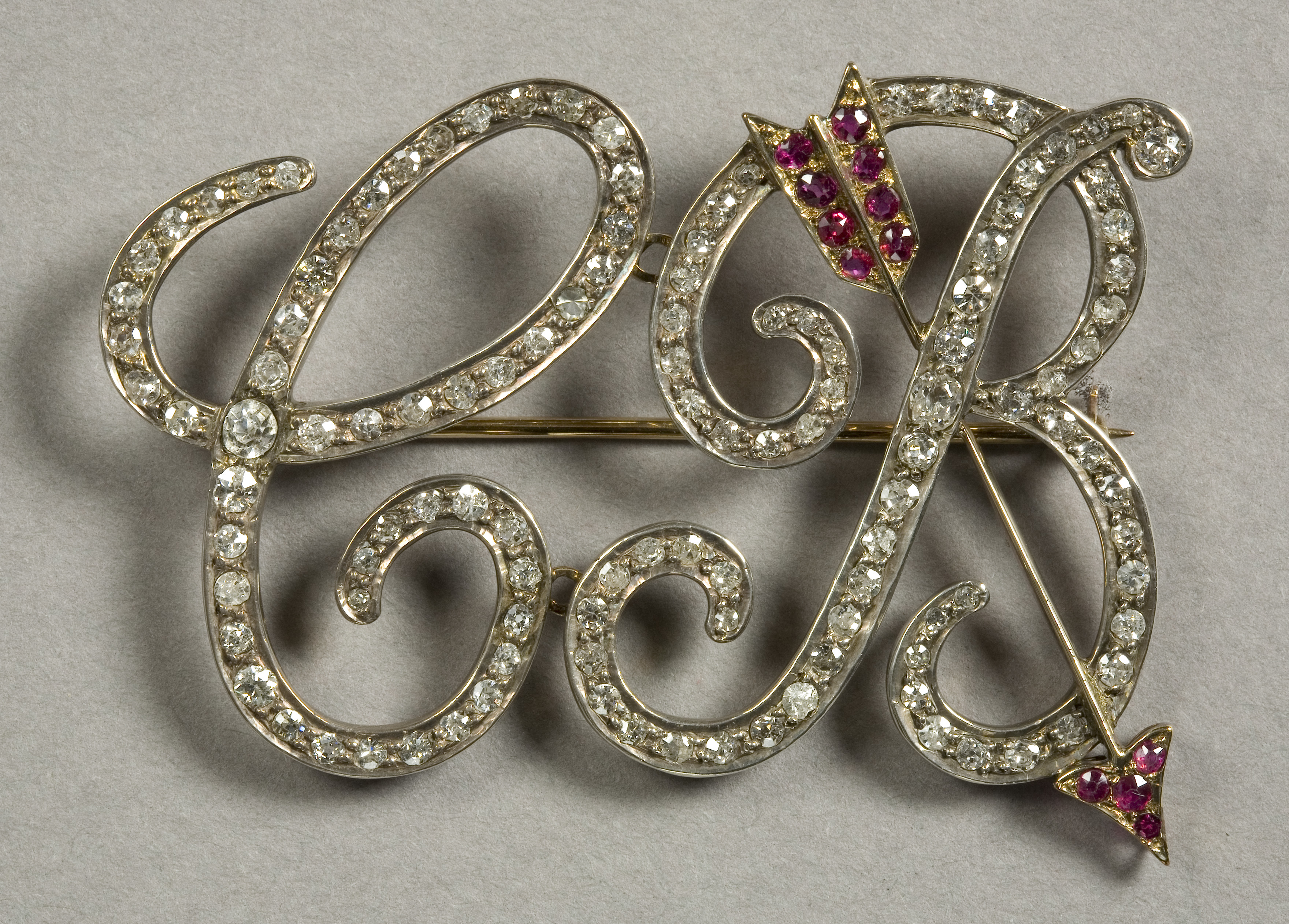While marriage as a stage in life, is a universal institution, the rituals which make up a ceremony have adapted and transformed throughout history and vary between different cultures and religions. Marriage in the UK is seen as a public declaration of love and commitment made in front of family, friends and often the local community. The Wedding Register (1920) by Edmund Blair Leighton depicts a very traditional and familiar UK wedding scene, the signing of the register – a legal requirement and an essential part of the marriage ceremony then as it is today. Blair Leighton (1852-1922) was most known for his romantic paintings that often depicted couples in a significant moment in their lives.
A thread of continuity has existed in the rituals and practices of Indian wedding ceremonies of the ancient world to date. As a result, ancient Indian customs depicted in art or sculptures on display in museums present familiar scenes to modern day audiences. Kalyāṇasundaramūrti or Vaivāhikamūrti, a sculpture from Rige Shiba’s National Museum New Delhi, depicts the auspicious matrimonial union of Śiva and Pārvatī, symbolizing the unison of male and female principles. This fascinating sculpture, when juxtaposed with a modern wedding picture, clearly demonstrates the beauty of continuing age-old traditional practices. The depiction of Śiva marrying Pārvatī is frequently seen on the walls of rock cut caves and temples dedicated to Śiva in the early medieval period and later centuries. Śiva is one of the gods in the Hindu trinity and is known as the god of destruction; whereas Pārvatī, is one of the many forms of Śakti, is seen as the mother of the universe. The depiction of Kalyāṇasundaramūrti would have been part of a larger narrative depicting the various puranic (ancient Sanskrit writings on Hindu mythology) myths and episodes associated with Śiva; his marriage to Pārvatī is one among the more popular narratives in India.
Traditionally the wedding image of Śiva and Pārvatī depicts Brahmā, the second god in the Hindu trinity and also the creator god, performing the role of a priest who leads a marriage ceremony in Hindu tradition. He also performs the ceremony of homa, making an offering to the fire. Viṣṇu, the preserver god, the third god in the Hindu trinity, is usually depicted as facilitating the pāṇigrahaṇa ceremony- literally holding of the hands – where the hands of the bride are given to the groom in marriage. Joining the celebration is the congregation of gods and celestial beings, witnessing the beautiful matrimonial alliance of Śiva and Pārvatī from the sky. This includes lord Indra, the Hindu god of rains mounted on Airāvata (elephants), Akshadikpalas (the guardians of quarters), Vidyādharas (lords of learning) as well as Gandharvas (semi divine beings).
The content of marriage ceremonies vary across the India due to the cultural diversity of the Indian population: the concept of the brahmanical marriage system, as depicted in Kalyāṇasundaramūrti, would be completely alien to a community residing in, for example, the Northeastern part of India. The photograph above is a scene from Rige’s wedding which was a traditional Arya Samaj Marriage, where the ceremony is performed following the vedic rituals: the oldest forms of religious activity performed in India, carried down through the generations due to the existence of early written materials. Vedic traditions shaped Hinduism. As part of this ceremony a priest explains the meaning of all hymns chanted during the marriage to the bride and groom. The Arya Samaj or ‘Society of Nobles’ was a socio-religious reform movement, founded in 1857 by Swami Dayanad Saraswati. Central to the Arya Samaj Society are principles including the promotion of female education and equality in marriage and society.
Raja Ram Mohan Roy, considered by many as the father of the Indian renaissance, dedicated his life to the principles of the Brahmo Samaj reformist movement (founded 1828), which amongst many causes was committed to combatting some of the ancient customs deemed excessive and out of date associated with marriage, including sati, polygamy, child marriage and dowries. Ram Mohan Roy was sent from India to the UK on behalf of the Mughal emperor Akbar Shah II to present the emperor’s case for better treatment from the East India Company, whilst on this trip he was instrumental in drawing the British government’s attention toward the status of women in society. Ram Mohan spent the last days of his life in the port city of Bristol, and his remains were laid to rest in the Arnos Cemetery, Bristol.
Despite adjustments to, modifications and appropriation of various marriage ceremony customs and rituals over the centuries, the depictions of the Kalyāṇasundaramūrti not only presents an image of marriage ceremonies of former generations but resonates with modern audiences. For most of the communities in India, a marriage ceremony can last for a week or more with elaborate rituals and grand receptions. A Hindu marriage festivity begins with the fixing of a wedding date based on the dates of birth of a bride and a groom and the position of the planets. Eventually, a haldi (application of turmeric past on bride and groom) and Sangeet (pre-party) ceremony is organised celebrating the forthcoming marriage, followed by the Mehandi (Henna) ceremony, which culminates the festivities with a marriage.
Increasingly fewer British people are getting married, but for those who do it is a special day. Until 2005 brides and grooms had the choice of a church, religious building or registry office but now there are many more possibilities: in Bristol, amongst many venues, M Shed and Blaise Museum are both registered for weddings. At M Shed the bride and groom can avoid the stairs and choose to be delivered to the top floor by one of the dockside cranes. The singer Dame Clara Butt, a celebrity in her day, was offered St Paul’s Cathedral for wedding, but chose to be married in the Cathedral of her hometown, Bristol; her wedding was the first to take place in the Cathedral for 100 years. Bristolians were very proud of ‘their’ international star, and a public subscription was raised for a present when she married. The people of Bristol presented her with a brooch, which she wore often and is today a part of the Bristol Museums, Galleries and Archives collection. Twenty-five years later, Dame Clara could still get into her wedding dress, and she and her husband celebrated their silver wedding anniversary with a concert at Bristol’s Colston Hall.
Today, with Bristol’s diverse population, there are many different forms of wedding ceremonies, from religious to humanist, taking place in churches, temples, synagogues, mosques, the registry office, country houses, the Mansion House, hotels, museums, Bristol Old Vic theatre, private schools, St George’s concert hall, community centres, Bristol Zoo, football and cricket grounds, City Hall, Arnos Vale Cemetery and on board the SS Great Britain.
Next Theme →
[foogallery id=”2247″]
